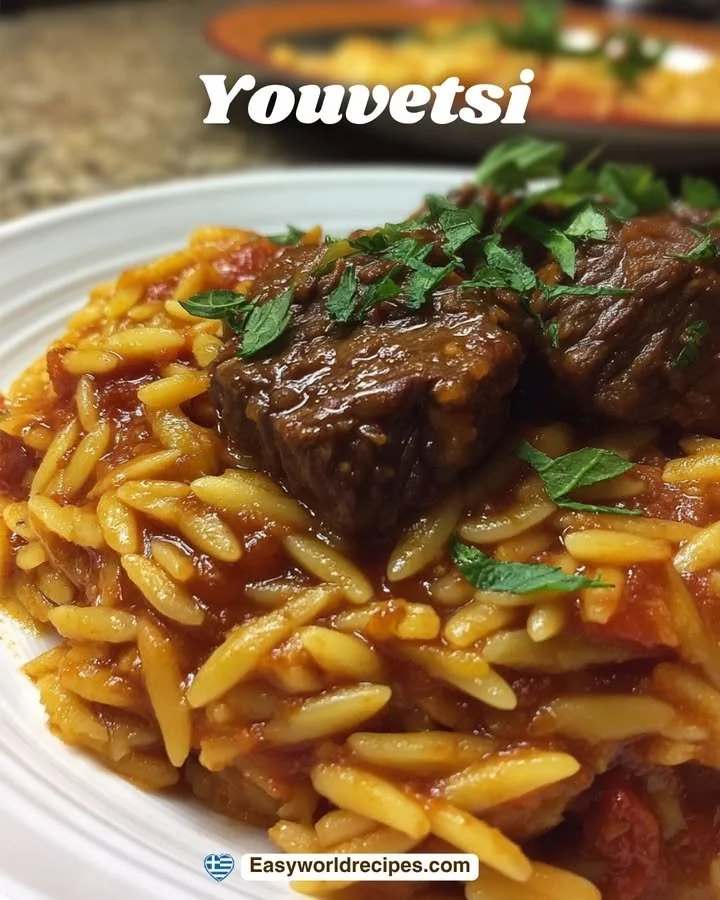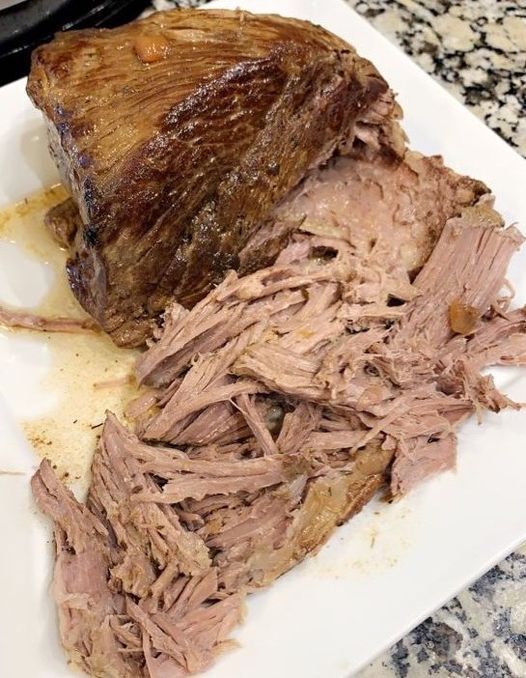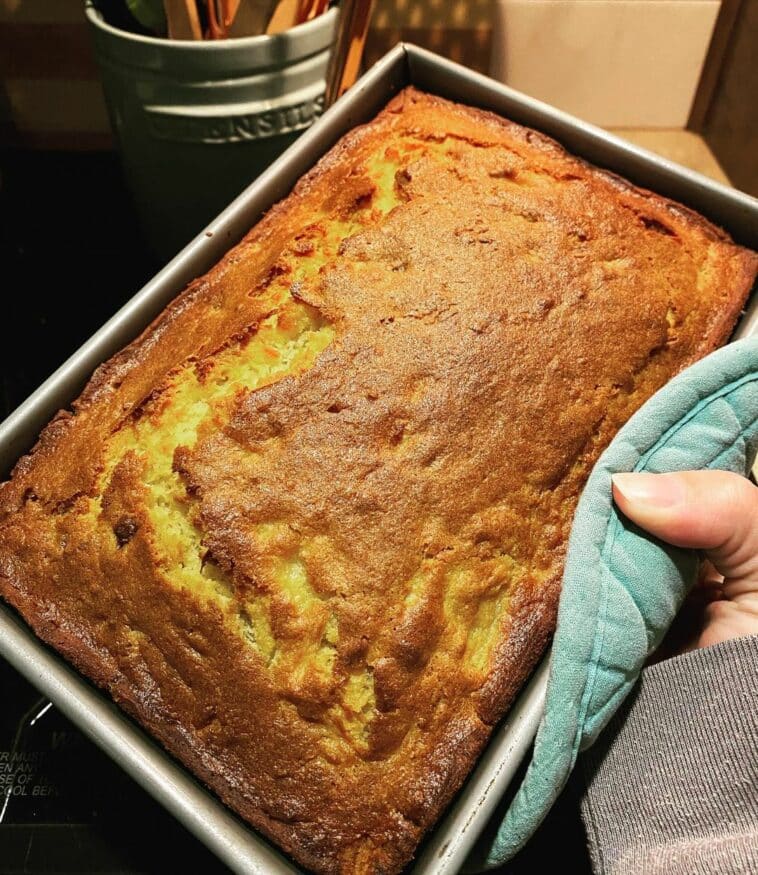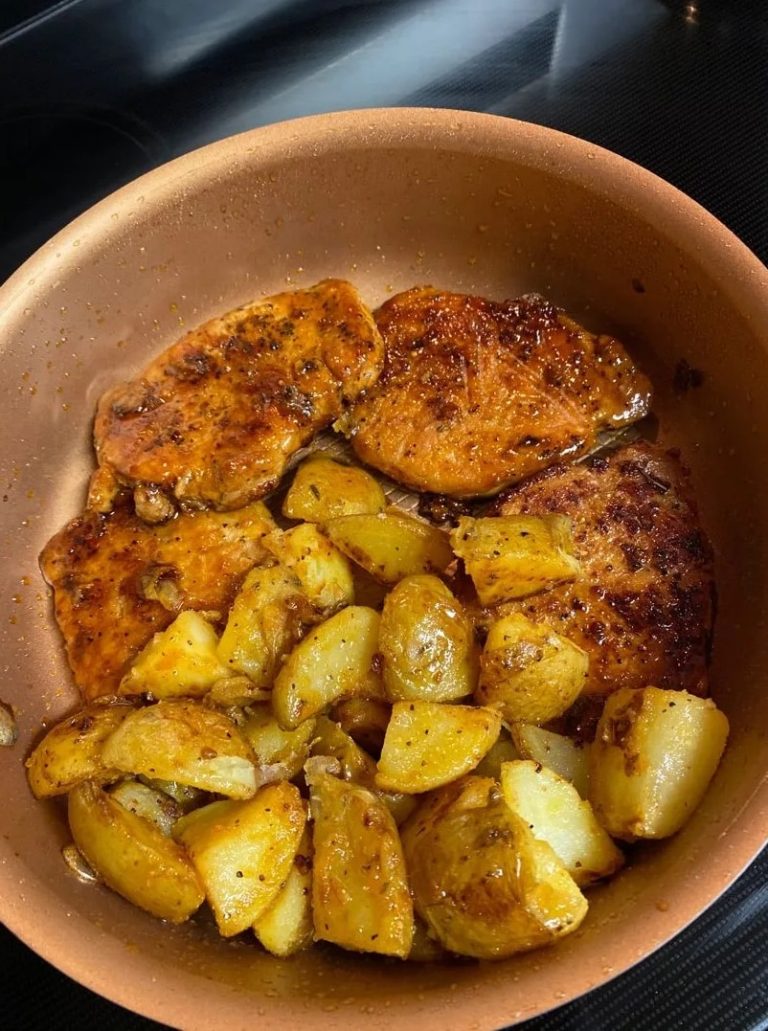Youvetsi

Youvetsi: The Comforting Greek Stew That Feels Like Home
There’s something about a pot of youvetsi bubbling away in the oven that brings me straight back to my grandmother’s cozy kitchen. The scent of cinnamon and roasting beef would fill her whole house, mingling with laughter and chatter as we waited impatiently for dinner. My hands still know by memory how she’d sneak me a spoonful—the orzo impossibly creamy, the meat so tender it fell apart with the touch of a fork. If you’re hunting for a comforting Greek stew recipe that feels like a big, warm hug, youvetsi is about to become your new favorite.
Why You’ll Adore This Youvetsi
Let me spill the beans—here’s why I can’t get enough of this wholesome youvetsi (and why I think you’ll fall for it too):
Ultimate Comfort Food: There’s nothing quite like the flavor of classic youvetsi. The rich beef, luscious tomato, and warming spices just soak right into that orzo, making every bite deeply satisfying.
One-Pot Wonder: Youvetsi is completely fuss-free. Just one Dutch oven needed—less cleanup, more time relaxing with loved ones.
Family Friendly: Kids and adults alike go back for seconds. That hint of cinnamon and allspice gives youvetsi its signature Greek twist, but it’s mild, warm, and welcoming for every palate.
Leftovers Are Even Better: The flavors deepen and meld after a day in the fridge. It’s one of those stews you’ll be happy to eat all week long (honestly, if it lasts that long).
Ingredients You’ll Need for Youvetsi
Here’s what you need to make an irresistible batch of youvetsi—and a few little notes from my own kitchen:
- 2 lbs beef chuck, cubed: I love beef chuck for its marbling and tenderness after slow-cooking. Trim away excess fat if you like, but a little richness goes a long way.
- 1 large onion, chopped: Yellow or sweet onions work beautifully. Dice it finely so it melts into the sauce.
- 2 garlic cloves, minced: Fresh is best, but pre-minced garlic will do in a pinch.
- 1 can crushed tomatoes (14 oz): Use a good-quality brand for that sun-ripened flavor. Fire-roasted tomatoes add a subtle smokiness!
- 1 cup orzo pasta: This small, rice-shaped pasta is a Greek classic. Barley or Arborio rice can stand in if needed.
- 1 tsp cinnamon: Don’t skip this—cinnamon is the secret behind traditional Greek youvetsi’s soul-soothing aroma.
- 1/2 tsp ground allspice: Adds background warmth. No substitute rivals the real thing.
- Salt and pepper to taste: Season to your preference; I usually go a bit heavy on pepper.
- 4 cups beef broth: Homemade or good-quality store-bought both work. Low-sodium helps control saltiness.
- Grated kefalotyri or Parmesan, for serving: Kefalotyri is classic, but Parmesan is perfect if you can’t find it (plus, it melts into dreamy ribbons).
Step-by-Step Guide: Making the Perfect Youvetsi
Cooking youvetsi is all about layering simple flavors for maximum coziness. Here’s how I bring my family’s Greek comfort food to life:
- Sauté the Base: Heat a glug of olive oil in your Dutch oven. Sauté chopped onion and garlic until soft and translucent—your kitchen will already start smelling incredible.
- Brown the Beef: Add the beef cubes, giving them space to get a good sear on all sides. This step is key for developing that deep, savory flavor! (Don’t crowd the pot; work in batches if needed.)
- Stir in Tomatoes and Spices: Mix in crushed tomatoes, cinnamon, allspice, salt, and pepper. Pour in beef broth and scrape up all those tasty browned bits from the bottom—that’s pure gold.
- Simmer: Cover and let the beef stew gently for about an hour. Stir occasionally, inhale deeply, and enjoy the anticipation.
- Add Orzo: Preheat your oven to 375°F (190°C). Stir in the orzo, making sure it’s well distributed throughout the stew.
- Bake to Perfection: Bake uncovered for 30–35 minutes, giving it a gentle stir once or twice, until the orzo is plump and the stew thickens to a cozy, spoonable consistency.
- Serve and Savor: Dish up steaming bowls and don’t forget a generous sprinkle of grated kefalotyri or Parmesan on top. Heaven!
My Secret Tips and Tricks for Youvetsi Success
Let’s keep things real—these are my go-to tips for nailing the classic youvetsi every time:
- Sear with Patience: Searing the beef deeply is what builds rich, meaty flavor into your Greek stew. Don’t rush this step!
- Orzo Timing: Add the orzo only just before baking. Too early and it gets mushy; too late and it’s still tough.
- Cheese Matters: If kefalotyri is elusive at your market, Parmesan is a fantastic substitute that still gives you that salty, nutty bite.
- Baking Uncovered: Baking youvetsi uncovered lets the sauce thicken perfectly—no watery stew here!
- Let it Rest: I like to let the pot sit for 5–10 minutes after baking. The orzo soaks up those last bits of sauce, making every spoonful extra creamy.
Trust me, these small tweaks make a huge difference in your youvetsi!
Creative Variations and Ingredient Swaps
Making youvetsi your own is part of the fun! Here are a few tried-and-true swaps (so everyone at your table is happy):
- Use Lamb or Chicken: For a different spin, substitute lamb stew meat or boneless, skinless chicken thighs for beef (lamb youvetsi is a classic in many Greek homes!).
- Go Vegetarian: Skip the meat and double up on veggies like mushrooms, eggplant, and bell peppers. Use veggie broth instead of beef broth—a Mediterranean delight!
- Amp Up the Veggies: Stir in chopped carrots, zucchini, or even spinach right before baking for extra color and nutrition.
- Gluten-Free Option: Sub in a small, gluten-free pasta shape or use Arborio rice for a risotto-style Greek orzo bake.
- Spice It Up: Like a little kick? Add a pinch of crushed red pepper flakes or a dash of smoked paprika for a new flavor twist.
Feel free to let the seasons—and your cravings—inspire your youvetsi experiments!
How to Serve and Store Your Youvetsi
This classic youvetsi is so cozy served hot straight from the oven. Here’s how I love to dish it up, plus tips for leftovers:
- Serving Suggestions: Pile youvetsi into wide bowls and give each portion a big handful of grated cheese. Serve with a crisp Greek salad and crusty bread to mop up every last drop.
- Leftover Love: Store any extras in an airtight container in the fridge for up to 4 days. When reheating, add a splash of beef broth or water to loosen the orzo and bring back that silky texture.
- Freezing Friendly: Freeze in individual portions for up to 3 months. Thaw overnight in the fridge, then reheat gently on the stove.
Meal prep win! You’ll have a homemade Greek beef stew ready whenever the craving hits.
FAQs: Your Top Questions About Youvetsi Answered
1. Can I use a different type of pasta instead of orzo in youvetsi?
Absolutely! You can swap orzo for another small pasta (like risoni or ditalini) or even Arborio rice for a different texture. Just keep an eye on liquid levels—some pastas absorb more broth.
2. Is youvetsi gluten-free?
Traditional youvetsi uses wheat-based orzo, but you can easily sub in a gluten-free pasta to make this Greek stew recipe celiac-friendly.
3. What’s the best cheese topping for youvetsi?
Kefalotyri is the classic Greek choice, but Parmesan, Romano, or even feta work beautifully if needed. Go with what you love!
4. Can I make youvetsi ahead of time?
Definitely! Youvetsi tastes even better a day or two later as the flavors meld. Reheat gently with a little extra broth.
5. Can I make youvetsi in a slow cooker?
Yes! Sauté the onions, garlic, and beef first, then transfer to your slow cooker with tomatoes, spices, and broth. Cook on low for 6–8 hours, then stir in partially cooked orzo near the end for perfect texture.
If you try this homemade youvetsi, I hope it brings your kitchen as much joy and warmth as it does mine. Whether you’re a lifelong fan of Greek comfort food or discovering youvetsi for the first time, I’d love to hear how your stew turns out—leave a comment or share your spins and family memories below!
Kali orexi—happy eating, friends!





